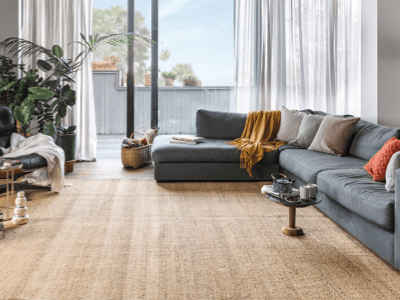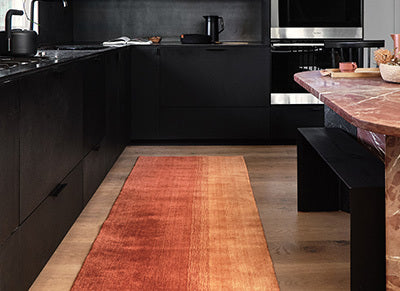Enjoy FREE SHIPPING within the contiguous US (excluding Alaska and Hawaii) on all rug orders. For Alaska and Hawaii, shipping costs will vary depending on the size and weight of your order. Click here for more information.
×-
Rug Size
Length:Width:
- Price
- Color
- Shape
- Material
- Pile
- Age
- Origin
- Collection
-
Sort & More Filters
Rugs
The most reliable, affordable place on the internet to shop handwoven rugs. We curate vintage rugs from across the world and ship them to your doorstep. We also design rugs and furniture with artisans worldwide.

Rugs by Size
Find the perfect rug for your room, big or small.
Vintage Rugs
Handwoven and high quality, our one-of-a-kind pieces are unlike any other rug out there.
New Rugs
Handwoven today with the techniques of yesterday.

Rugs by Country
Rugs by Style
Our collections are carefully categorized so you can find what you need.
Bestselling Rugs
Customer favorites for good reason - carefully crafted and affordably priced.
Shop by Color
Rugs in every hue, from vintage to new.
Shop by Room
Living Room Rugs

Kitchen Rugs

Bedroom Rugs

Dining Room Rugs

Study and Den Rugs

Kids' Room and Nursery Rugs


Revival 101
Review of Revival Rugs

Revival Rugs
Revival Rugs is the best place to find your next area area rug online. Since 2017, our team has worked to create deep connections with artisans worldwide, which lets us bring you high quality vintage rugs, Turkish Rugs, Moroccan Rugs, and Indian Rugs at affordable prices.
We have hundreds of vintage rugs and new rugs in stock. Whether you're looking for mid-century modern rugs contemporary neutral rugs, bright and bold rugs, or one-of-a-kind traditional oriental-style rugs we have something to fit your style of decor.
Everything you need to know about Rugs
The right rug can transform a room, and also transform your experience of that room. You’ll want to spend more time there; you like how it feels on your feet. It’s the same reason you want to find any decor or art that works with your space - you feel good every time you look at it.
Rug Materials
There are many types of rugs, and thus many types of high-quality rug materials; you just want to know what you’re getting. We’re not purists about it; we’re pretty democratic. There aren’t really “best rugs”, but there is definitely the best rug for you! Like any investment, you want to buy something that will last. We like to make our rugs with sturdy, comfortable, and beautiful materials that are environmentally friendly.
On average our most-used rug material is wool, which is the most widely used fiber in Turkish and Moroccan rug design. Wool is a wonder-fiber; it's anti-bacterial and protected by its natural lanolin. It’s plentiful in supply, durable, long-lasting, and soft—so it’s super comfy to walk and relax on. There’s a reason it’s been used for centuries in rug production and is still used today.
We also sell a lot of rugs made with jute, another natural fiber known for its tensile strength and versatility. Jute is a flexible material; and when finely-woven enough it can look both elegant and casual. Soft enough in a bedroom but tough enough to withstand a playroom. An eco-conscious crop, jute has minimal water needs, and consumes large enough quantities of carbon dioxide that it’s C02-neutral. Many of our rugs incorporate cotton or hemp, and our outdoor rugs are made of a fiber that’s comprised of recycled plastic bottles.
Rug Techniques
The most common weaving techniques are hand-knotting, flatweaving, hand-tufting, and hand-looming. Hand-knotting and flatweaving are the oldest styles of weaving. Different techniques will yield different rug textures; as will pile height. If you know your rug is going into a high-traffic area, go for a construction or technique that is more durable (hand-knotting or flatweaving) so it will be able to last.
Hand-knotted rugs are sturdy pile rugs woven by hand, and their knots are tied individually tied onto the rug’s foundation—meticulously crafted, no two hand-knotted rugs are exactly alike. Flatweave rugs are reversible rugs without pile, also known as kilims, made by hand-weaving horizontal weft yarns through vertical warp yarns Hand-tufted rugs are pile rugs woven by pulling or shooting loops of yarn through a backing material, which are trimmed for a smooth cut-pile finish. Hand-loomed rugs are pile rugs woven on a loom, with an innovative technique that lifts the warp yarn to create a pile that’s looped or cut.
Rug Sizes
The rules of rug sizing are malleable; they vary based on the space and the furniture. Ultimately you want something that complements the dimensions it’s living within. How big of a rug you need will depend first on the size of the room, second on the purpose of the room, and third on the furniture within it.
Choose the right rug size by measuring & drawing. Measure your room, measure the rug, make a little sketch to understand where things will fit. Use a rug size chart, or consult with an expert - we offer a free design consultation for just this scenario. If you’re interested in a custom sized rug, we can help with that, too.
Pattern-wise - you can’t really go wrong with geometrics, stripes, and color-blocking. Overdyed rugs are flexible; adding color and subtle tone-on-tone rug patterns. Traditional Turkish and Moroccan rugs are known for their versatility of pattern—their intricate or exuberant designs somehow soak up the lines of the room instead of overpower it. With rug patterns, more is more, in many cases.
Rug Placement
There’s no hard and fast rule for this, and it changes depending on which designer you speak to - they all have their preferences, and it can all look good. But generally, if you’re looking for area rugs (ie rugs that will cover most of the room), you want to place your rug in the middle of the room, leaving 1-2 feet between the rug and the wall (we aim for 1.5) so it can breathe, and you want the majority of your furniture to fit on it, at least partially—i.e., the front legs of a chair are on it.
That said, we love rooms which have multiple rugs. Maybe you’re layering one on top of the other, like a smaller vintage kilim over a larger flatwoven jute. Or maybe you have a runner on either side of your bed - especially good if they are mismatched. Or you have a larger space and you use several smaller rugs to partition it into different sections: a seating area here, a reading nook there, a dining space near the window.
Your home is a living, breathing entity - it’s an environment that grows with you and your family over time. We like to think of our product as buildable. So maybe you buy a jute rug, and you love it, but a year later you inherit your mom’s couch because she’s getting a new couch, and it changes the room, so you find a vintage rug that’s a little smaller than the jute and can lay it on top.
Rug Shapes
Rugs are made on looms, which are designed to produce rectilinear textiles: either squares or rectangles. You’ll notice a lot of Moroccan rugs are longer and thinner than the typical American room; this is because they are made on looms which facilitate that shape. That’s also why circular rugs are harder to come by, as the technique and tools used to weave rugs aren’t as well-suited to circular shapes.
Rug Ages
Antique rugs are over 100 years old, whereas vintage rugs are at least 20 years old, but less than 100. Both vintage and antique rugs can be expensive, and should be on some level, because of all the resources which go into creating them: the people who weave them and who grow and harvest the raw material.
Good rugs shouldn’t cost a fortune, though. That’s why we make and curate responsibly-priced, well-made affordable rugs by cutting out superfluous markups. Often rug stores feature arbitrary markups - there’s no system in place to regulate how much someone will charge for the pieces they stock. The best place to buy rugs is from someone whose rug selection and values you like, because that way, you’ll be excited to exchange money for your new piece. We also think the best place to buy rugs is from us, because you know you’re getting something special, well-priced, and delivered straight to your door, whether it’s designed by our expert team, or sourced from our partners in Turkey, Morocco, and India.
Shop All Rugs
- All Rugs
- Vintage Rugs
- Turkish Rugs
- Moroccan Rugs
- Oriental-style Rugs
- Shag Rugs
- Kilim & Flatweave Rugs
- Runner Rugs
- Round Rugs
- Mid Century Modern Rugs
- Kids' Room & Nursery Rugs
- Wall Hangings
- New Rugs
- Indian Rugs
- Naturally Aged Rugs
- Overdyed and Distressed Rugs
- Rare Rugs
- Rectangular Rugs
- Striped Rugs
- Geometric Rugs
Be the first.
Sign up for early access to our newest collections and receive $40 off your first order over $250.











































































